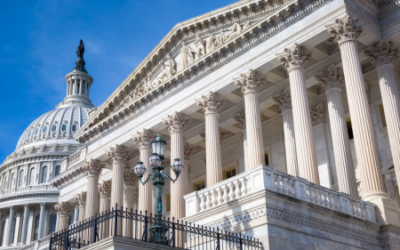The federal government may not like the Paris Climate Agreement, but state and local elected officials do. This past weekend, Los Angeles Mayor Eric Garcetti hosted a large number of mayors who reiterated their commitment to the partnership agreement. These officials visiting Florida for the U.S. Conference of Mayors represent the Climate Mayors, a bipartisan organization that was organized in 2014. The group now boasts 331 mayors representing 65 million Americans. The membership includes mayors from the 10 largest cities in the U.S., including traditional energy hubs such as Houston and Dallas.
Filling in the climate leadership vacuum left by the new administration, mayors and governors are stepping in to lead the fight against climate change. But, it’s not all happening at the local levels of government. The governors of California, New York and Washington have joined forces to create the United States Climate Alliance, a coalition of states committed to upholding the goals of the Paris agreement. This is good news for the country and it’s great news for companies with services and solutions that will be in high demand. There will be an abundance of contracting opportunities.
Here’s a small sampling of the opportunities that have approved funding:

The city of Portland, Ore., recently approved a budget that includes $538,000 for renewable energy initiatives. Funds are set aside for the purchase of six Renewable Natural Compressed Gas (RNCG) compatible vehicles. Additionally, the city plans to upgrade the municipal buildings to limit greenhouse emissions.
Seattle’s new budget appropriates $2.5 million for energy efficiency work that will be managed by the Office of Sustainability and Environment. The city has a goal to achieve a 20 percent reduction in building energy by the year 2020.
A new clean energy ordinance will reduce Los Angeles’ greenhouse gas emissions by 10 percent by 2025 and energy consumption by 7 percent. The recent Los Angeles city budget includes $178 million for updating city-owned facilities with lighting replacements and new HVAC equipment.
The 2017 city budget for Oakland, Calif., allocates $750,000 for energy-efficient lighting, HVAC energy refits and a new energy-efficient police building. The city is also exploring the possibility of providing numerous electric plug-in stations in an effort to reduce the carbon footprint of motorists.
Denver will focus climate change efforts on the city’s operations. The new budget has allocated funding for the reduction of greenhouse gas emissions resulting from operations of the city and also the Denver International Airport. City leaders want to reduce energy consumption in city-operated buildings and city-owned vehicles by 20 percent. Another objective is to double the amount of renewable energy produced. Approximately $2.29 million is budgeted for these efforts.
The 2017 Boston budget includes $973,000 for energy and environment initiatives. Projects will be focused on facility upgrades and preparing public infrastructure for climate change.
New York City’s Mayor Bill de Blasio has pledged to launch a long-term $20 billion climate resiliency plan. This includes $170 million for storm water management and an additional $27.5 million for the Lower Manhattan Protect and a flood protection plan.
The state of California will be working on dams as part of its climate change plan. The new budget calls for an increase of $3 million to the Dam Safety Fund. Priority will be given to projects such as upgrading appurtenant structures, spillways, gates and outlets.
It’s hard to identify any state where public officials at all jurisdictional levels are not actively involved in climate-related projects. That’s good news for citizens and also good news for companies that are interested in these types of contracting opportunities.
SPI’s government contracting consultants have decades of experience and personal relationships at all levels of government. Learn how they can help your company grow your business by contacting them today.






